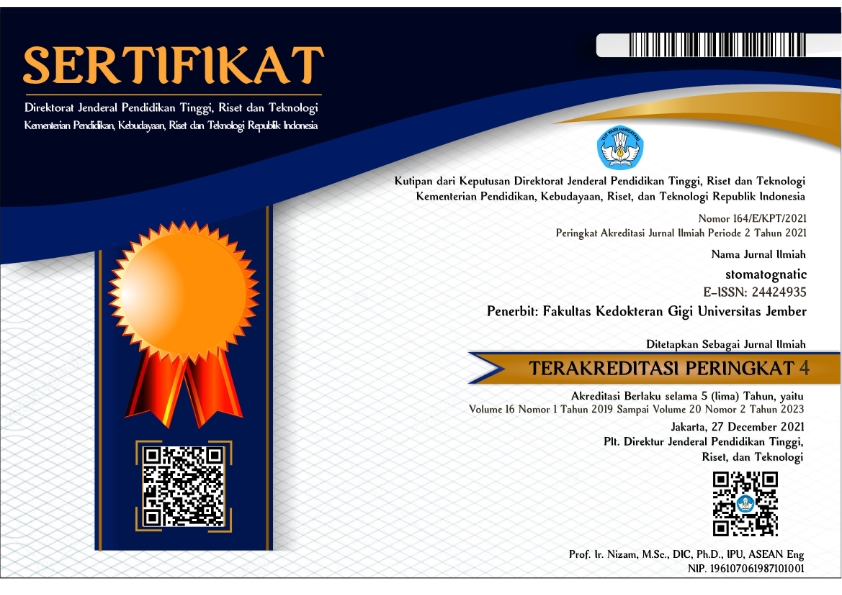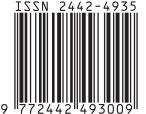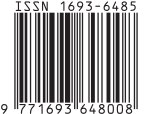Analisis Besar Sudut Gonial Mandibula pada Anak-Anak Penderita Down Syndrome
DOI:
https://doi.org/10.19184/stoma.v19i2.34738Abstract
The mandible is the largest and strongest part of the craniofacial bone of the face. The mandible is the movable part of the facial bone. The mandible has two main structures, the body of the mandible and the ramus of the mandible. These two bone structures meet and form an angle called the gonial angle. The gonial angle will change with age because the mandible will undergo bone remodeling so that it can cause changes in the shape of the mandible. Changes that occur in the gonial angle can be evaluated by means of a panoramic radiograph. The growth and development of the gonial angle which is part of the mandibular bone can be influenced by several factors, namely genetics, race, sex, nutritional factors, hormones, masticatory muscle activity, lifestyle, use of drugs, and the environment. One of the genetic disorders in the process of growth and development of the mandible is Down Syndrome. Down Syndrome is characterized by a small upper jaw, a wide face, wide eye spacing, and a flat nose. The purpose of this study was to determine the size of the gonial angle of boys and girls suffering from Down Syndrome. This research is a cross sectional study with the research subjects are children with Down Syndrome aged 10-16 years. Panoramic X-rays were taken on all subjects and then the gonial angle was assessed. The results showed that the size of the gonial angle will decrease with increasing age. Girls with Down syndrome have a larger gonial angle than boys with Down syndrome.







